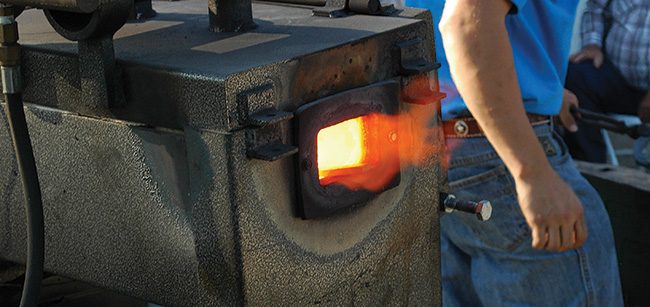American Farriers Journal
American Farriers Journal is the “hands-on” magazine for professional farriers, equine veterinarians and horse care product and service buyers.

The last widely adapted innovation with farrier forges came with the introduction of portable gas models. Since atmospheric and forced air forges arrived on the scene, there have been improvements and enhancements to various models, but no revolutionary changes that have altered their usage. And while today’s models have become quieter and more consistent, the practices for proper use and protecting your investment in these traveling tools have largely stayed the same. Following these practices will extend your forge’s life.
According to most manufacturers, the most common mistake farriers make is with gas pressure. More gas pressure isn’t always the answer.
“It may not heat as fast, but it will get as hot at 8 lbs. as it will at 20 lbs.,” says Donald Jones of NC Tool Company. “After the forge gets hot and you are running on repetition, it will keep its top temperature at 8 lbs. At this pressure, it should take you 3 to 3-1/2 minutes to get up to forging temperature on the first heat.”
If you want to conserve fuel, Jones recommends setting your pressure gauge between 8 to 10 lbs. Keep an eye on the signs of inefficiency, such as excessive secondary combustion.
“The less fire you see coming out of the front of your forge, the more efficient it is running,” he adds.
The maximum temperature of an atmospheric forge is 2,400 degrees Fahrenheit, reminds Heinz Glaser of Hypona Horse Care Products.
“It makes no difference how…